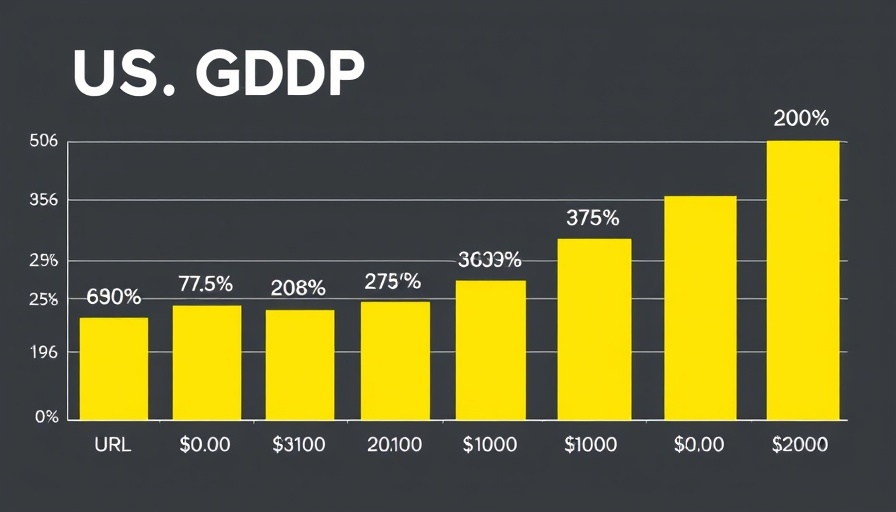
The Contraction: What Does a 0.3% Economic Decline Mean for America?
The recent news reporting a 0.3% contraction in the US economy raises important questions about the state of economic affairs in the nation. Primarily influenced by a surge in imports due to Trump's tariffs, this decline signifies potential challenges ahead. The increase in imported goods is often viewed as a double-edged sword—it can provide consumers with more options and possibly lower prices, yet it adds stress to domestic manufacturers struggling to compete on price versus large volumes brought in from abroad.
Import Surge: A Blessing or a Curse?
The sharp increase in imports can often leaf the local manufacturing industries in a perilous state. As companies shift their resources to manage the overwhelming influx of foreign goods, many fear that worker layoffs could follow. This raises critical employment concerns, especially in key markets such as the Bay Area, where thousands of tech startups and local manufacturing businesses strive for growth amidst fierce competition.
The Impact on Bay Area Businesses and Startups
For the Bay Area startup ecosystem, where venture capital funding plays a pivotal role in innovation, this contraction can have significant implications. Local investors and entrepreneurs often rely on a resilient economy to secure funding. However, a decline may lead to cautious investment behavior, altering the venture capital landscape. Business leaders in the region are advised to revisit their growth strategies and be aware of emerging industry trends that could offer new opportunities amidst economic uncertainty.
Future Predictions: What Lies Ahead for the Economy?
Looking ahead, experts are divided on the economic trajectory. Some predict pullbacks in consumer spending as households brace for tighter financial conditions, while others suggest that innovative business practices and technology adoption might offer pathways for recovery. Sustainable business practices and digital transformation remain key to thriving regardless of market fluctuations. Companies that can adapt quickly and efficiently will likely outmaneuver others stuck in traditional frameworks.
Embracing Change: Corporate Responsibilities in an Uncertain Market
In challenging economic landscapes, corporate social responsibility becomes even more crucial. Businesses are encouraged to reinforce their commitment to sustainability and ethical practices to gain consumer confidence. Actions that resonate with a socially aware public—not only ensure compliance with regulations but can also enhance brand loyalty. As unemployment rates potentially rise, supporting workforce diversity initiatives and local employment can further solidify a company's reputation.
Real Estate Trends: Navigating a Shifting Landscape
The recent economic downturn also affects the commercial real estate market. Investors may need to reassess the viability of their holdings, especially in areas that show signs of contraction. The Bay Area's real estate, known historically for its resilience, must adapt to emerging trends, such as the growing demand for mixed-use developments and flexible office space as remote work becomes the norm.
Conclusion: Navigating the Economic Challenges Ahead
As businesses and entrepreneurs in the Bay Area navigate the complexities of the economy's contraction, maintaining flexibility and continuing innovation will be vital. Understanding market analysis and employment trends—paired with proactive strategies—will help local companies not only endure but thrive in a challenging business environment. Embracing change, understanding consumer behavior trends, and re-evaluating business growth strategies can lead to sustainable success, even in uncertain times.
 Add Row
Add Row  Add
Add 



Write A Comment